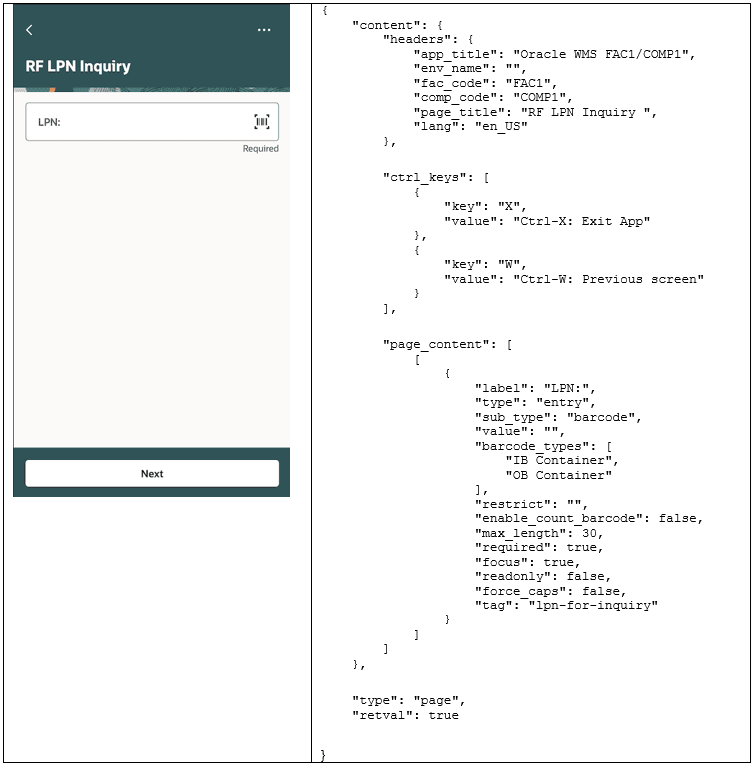Redwood: Empower Customer and Partner Customizations for Redwood Mobile
We’re excited to launch the Redwood Mobile API, designed to empower our customers and partners to build and extend custom mobile applications and solutions.
This feature introduces a new GET Next rwmobile Page API, providing direct access to the Redwood Mobile backend. With this API, you can retrieve next-page JSON payloads, allowing you to seamlessly render mobile UIs using any technology or framework you prefer.
KEY BENEFITS
- Build unique mobile experiences tailored to your business needs, using your preferred development tools and platforms.
- Integrate the Redwood Mobile backend into your own custom apps, extensions, and solutions.
HOW THE API WORKS
The following is the general sequence of events for how the API will work:
Customer or partner front-end screen makes a REST call get_next_rwmobile_page
- The API returns a JSON representation of the data on a mobile screen
- This representation merely describes the fields and data in each field, along with action keys (control keys) available on that screen
- It assumes a certain basic layout of the mobile screen which will be described later
- It does not contain any design or rendering elements, such as CSS
- The customer/partner front-end UI renders the fields represented in the JSON
- CSS and other design considerations are up to the front end
- The front-end accepts user input, whether its data typed into a field or an action key and then invokes the same API, passing in this user input
- The sequence repeats, until the user exits the application
PAGE DEFINITION JSON EXAMPLE
The following is an example screen from LPN Inquiry including the screenshot of how WMS Redwood Mobile renders it, as an example. Using this JSON, customers can render the screen however they see fit using any technology of their choice, including Oracle technologies such as Visual Builder (VBCS). Screen JSON examples can be retrieved using the developer toolbar in browsers such as Chrome or Firefox. Look for a request rwmobile?clientid=xxxx and then the network tab and the messages sub-tab.
The new API will return the JSON examples. The JSON examples are quite self descriptive and so there will not be separate additional documentation of the format. List pages such as the main RF menu page or pages where the user makes a selection, such as task list or reason code list pages have a slight different page_content section which is also self descriptive.
NOTE: The new API does not support the websocket communication mechanism. It follows the standard lgfapi request/response.

LPN Inquiry with JSON Rendering Example
AUTHENTICATION
The API is an lgfapi and therefore supports the same authentication methods used by other lgfapi’s, which are:
- Basic auth and
- Oauth token-based authentication with
- ROPC grant type, and
- Authorization code grant type, added in 25C
Customers can either build a login page for their mobile applications and obtain the Oauth token, or they can use the WMS login page and use SSO in combination with the authorization code grant type, if they want to avoid having their own login page.
Steps to Enable
Review the REST service definition in the REST API guides to leverage (available from the Oracle Help Center > your apps service area of interest > APIs & Schema). If you are new to Oracle's REST services you may want to begin with the Quick Start section.